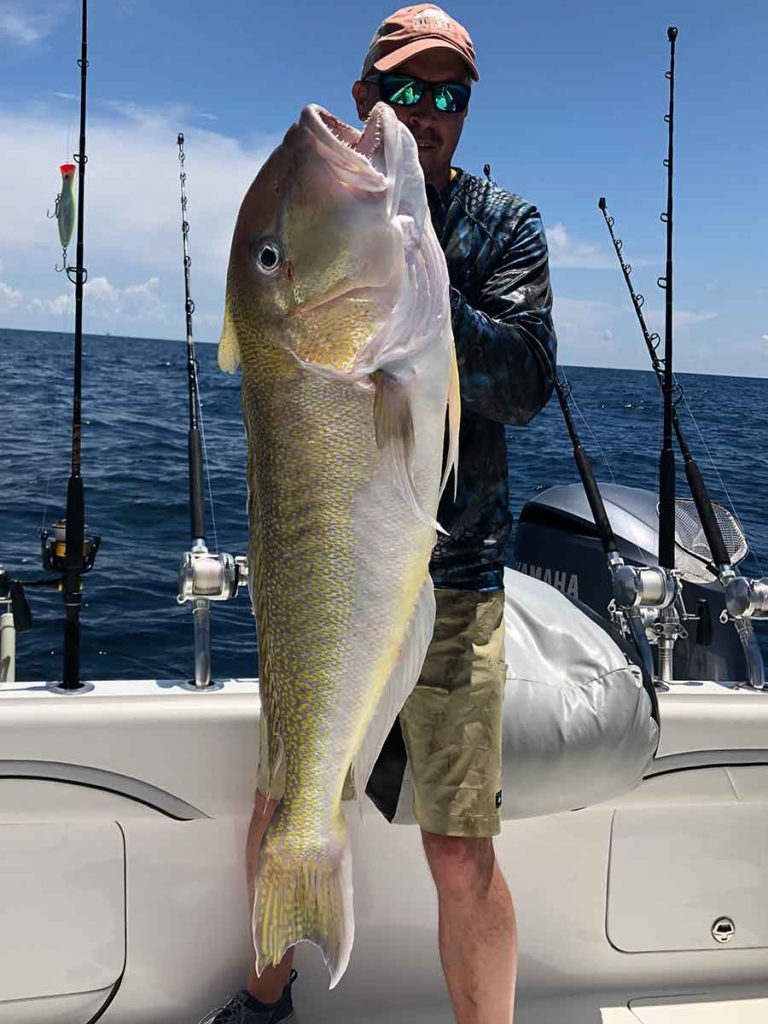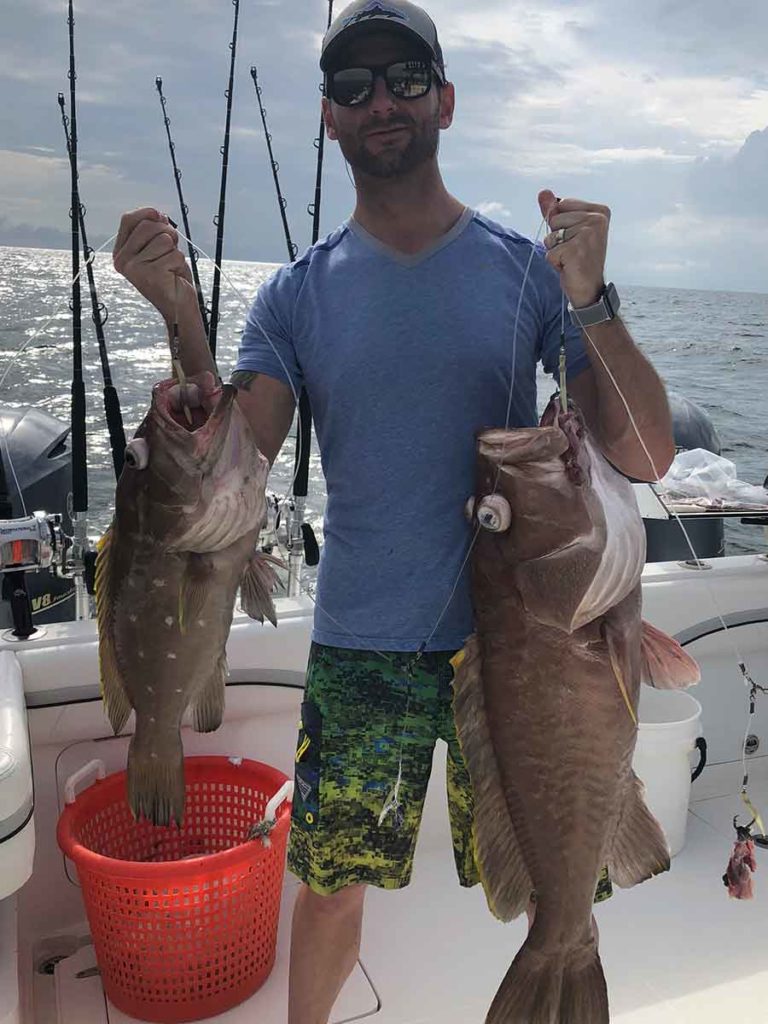CALL the CAPTAIN
Grouper fishing in Venice, LA is world renowned. The Gulf of Mexico is home to over a dozen species of grouper, many of which grow in excess of 100 pounds. During a Grouper Fishing Charter, it’s common to catch powerful species such as Black, Gag, Scamp, and Yellow Edge. These voracious bottom dwelling predators are some of the toughest fighting fish in the ocean. Groupers will congregate around rock piles, deep water structure, pipelines, and ship wrecks – often in large schools. While they are naturally territorial, Groupers will move around an area in search of food – with a preference for large live baits, or chunks of dead bait.
Grouper Fishing Charters are an ideal alternative to offshore fishing charters. Grouper fishing requires anglers to use stand-up tackle, or electric reels, to hoist larger specimens from depths of 100ft to 400ft (and deeper for some species). Fighting groupers is an experience unlike any other – they are resilient, exceptionally powerful predators who do not tire easily.


It’s common for grouper fights to last 20 minutes or more, depending on the angler’s tackle. Bottom fishing, in general, is a challenging endeavor – requiring the use of heavy weights to drop large baits to the bottom. Fishing around structure and rock piles can often lead to “break offs” as fish run for cover once hooked. Proper angling technique, durable rods/reels, and heavy line/leader is a requirement to catch trophy size groupers in the Gulf of Mexico.
Groupers are considered some of the finest table-fare in Gulf of Mexico waters. Despite their incredible strength and size, their meat is delicate and vibrant with flavor. Groupers feed, mostly, on fish and crustaceans, which makes their meat “white and flaky”. Groupers also develop a significant level of fat as they age, which is where they get their “buttery” taste. Due to their popularity as a food fish, the grouper populations in the Gulf of Mexico are carefully regulated. Before booking a grouper fishing charter with Paradise Outfitters, please call Capt. Hunter to confirm the season is open.
Casting topwater lures to pelagic fish that are aggressively feeding on the surface is an unparalleled thrill in the world of sportfishing. Predatory fish that actively feed on surface baits are ferociously powerful and often attracted to the “injured” motion a lure can present when skipping across the surface. This fishing style requires long-distance casting and rapid retrieval of large lures – making use of heavy-duty spinning tackle which can withstand immense pressure. Many pelagic species caught at the surface can be extremely acrobatic once hooked. Watching a “fired up” fish charge a surface lure is an incredible experience that should not be missed.
The traditional style of creating a “chum line” of chunk baits is commonly used around oil rigs, pumping stations, and drillships to attract a variety of pelagic species. Essentially, this is essentially “handlining” for deep water species, which requires the angler to pull 3 to 4-foot segments of line off the reel at a time, allowing the rigged bait to float with the current. This technique requires some practice but is incredibly effective when fish are feeding in the top level of the water column. Once a fish strikes the bait, the angler must “lock-up” the drag smoothly and swiftly, in order to allow a circle hook to set. With patience and dedication, almost any angler can master this technique.
Tried and true, trolling for pelagic species requires deploying artificial or rigged dead baits and dragging them behind the boat at varying speeds. This can be a highly effective method for enticing large pelagic predators to bite and is usually employed during specific weather conditions or fishing around oil rigs or pumping stations. Occasionally, slow trolling live baits that are specially bridled can produce bites when tunas do not actively feed.
This is the preferred method for catching larger pelagic species. When fishing out of Venice, LA – mullet, pogies, threadfin herring, hardtails, and small tunas are exceptional live baits if properly rigged. There is no more effective technique to entice a large pelagic fish to feed than by presenting a frisky live bait at the surface. Catching live bait, depending on the time of year, can be a “must” before heading offshore. Live bait is typically caught by throwing a cast net or by using a sabiki rig. You will never find yourself in a situation where having live bait isn’t a decisive advantage when targeting pelagic species.
The most physically demanding of all fishing techniques, this requires the use of heavy lead jigs that are specifically designed to sink fast and reach fish several hundred feet down. The angler must rapidly retrieve the jig while creating a “fluttering” motion with the rod – this mimics the behavior of a baitfish fleeing to the surface. Vertical Jigging can be the most effective method for catching fish that are holding tight to structure, deep beneath the waves.
Deep water structure such as rock piles, shipwrecks, and pumping stations are considered the best area to fish for grouper off the coast of Venice, LA.
Grouper fishing is a year round endeavor, but there are seasons when the harvest of certain species is prohibited.


Send a Message Now
By entering your email or booking a trip, you agree to receive Paradise Outfitters emails, including marketing emails, and agree to our Terms & Conditions and Privacy Policy.
By entering your email or booking a trip, you agree to receive Paradise Outfitters emails, including marketing emails, and agree to our Terms & Conditions and Privacy Policy.